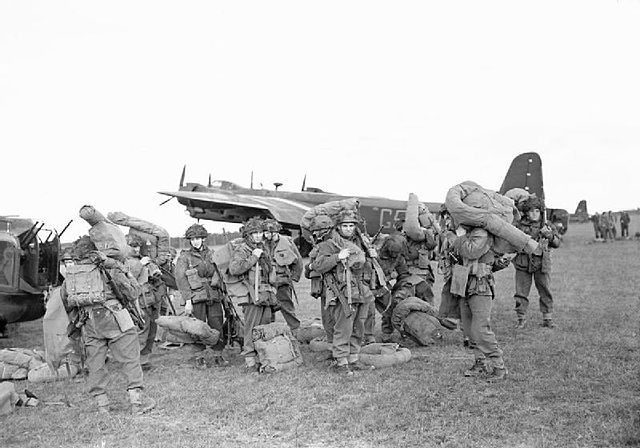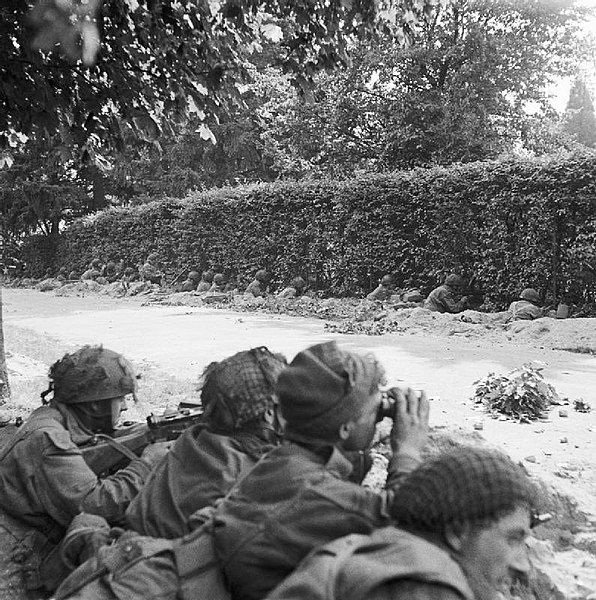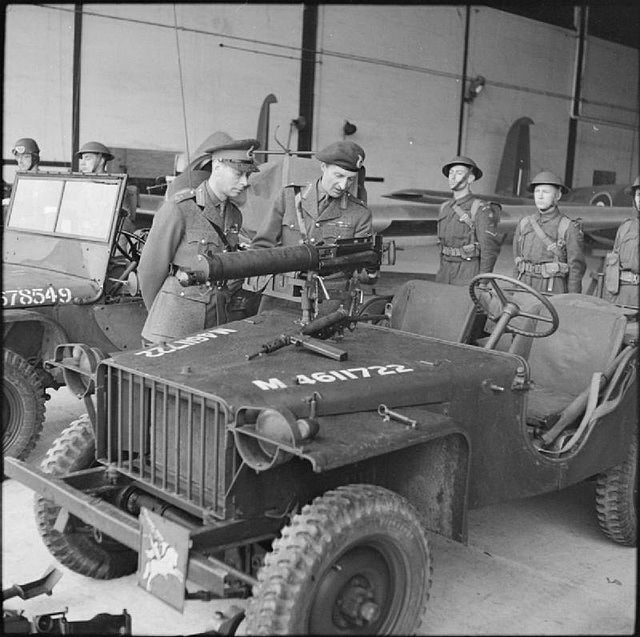In Operation Doomsday, the British 1st Airborne Division acted as a police and military force during the Allied occupation of Norway in May 1945, immediately after the victory in Europe during the Second World War. The division maintained law and order until the arrival of the remainder of Force 134, the occupation force. During its time in Norway, the division was tasked with supervising the surrender of the German forces in Norway, as well as preventing the sabotage of vital military and civilian facilities.
British airborne troops, just disembarked from Stirling aircraft at Gardermoen airfield near Oslo
Crown Prince Olav addressing the welcoming crowd at Oslo, accompanied by Major General Urquhart.
Storeroom at Sola aerodrome, Stavanger, holding some of the estimated 30,000 rifles taken from German forces in Norway after their surrender
1st Airborne Division (United Kingdom)
The 1st Airborne Division was an airborne infantry division of the British Army during the Second World War. The division was formed in late 1941 during the Second World War, after the British Prime Minister, Winston Churchill, demanded an airborne force, and was initially under command of Major-General Frederick A. M. "Boy" Browning. The division was one of two airborne divisions raised by the British Army during the war, with the other being the 6th Airborne Division, created in May 1943, using former units of the 1st Airborne Division.
Men from the 1st Airborne Division during Operation Market Garden fighting in the battle of Arnhem, September 1944.
British paratroopers training in Norwich, England, June 1941
King George VI inspects an airborne jeep fitted with a Vickers machine gun during a visit to the airborne forces in Southern Command, 21 May 1942. With him is Major-General "Boy" Browning, GOC of the 1st Airborne Division.
King George VI inspecting men of the 2nd Battalion, South Staffordshire Regiment, April 1943. Accompanying him is the battalion's commander, Lieutenant Colonel Osmund Luxmore Jones.







